Cuba, Our Mysterious Neighbor: Part I
Editor's Note: Short of going there ourselves, which we have yet to do, we could not have asked for a better reporter to go to Cuba and write about it for Yucatan Living. Byron Augustin and his wife Rebecca (who both also took the photographs in these articles) traveled to Cuba in 2014 from Cancun. This is the first of a 3-part article about their experience... enjoy!
****
Mysterious Neighbor
Cuba is beginning to attract major interest among some Americans who would like to travel to a destination that has been out of their reach for a long time. Cuba lies approximately 90 miles off the southern tip of Florida, and is equally distant from the northern tip of the Yucatan Peninsula. For a place so close, much of Cuba's history, geography, culture, politics and other aspects are not very well known in the United States and Canada. In this series of articles, we aim to fix that.
Let's Go To Cuba!
The year was 1964, and I was standing on a dock in a marina in Miami, Florida. A farm boy, out of Nebraska, I had driven to Miami with four college-aged friends to watch the Cornhuskers play Auburn in the Orange Bowl. We found ourselves with a couple of free days before the game and decided to use one of them to try our luck fishing. Our captain turned out to be a Cuban-American who regaled us with stories about his homeland. He reminisced about baseball, rum, cigars, pretty girls, salsa, and white sand beaches beside turquoise waters. Although I could not see Cuba from that dock, when I closed my eyes, the images he had described floated through my mind like a soft breeze over a quiet meadow. I was going to go to Cuba! Reality struck when I discovered there was an embargo that prohibited Americans from going to Cuba.
Fast-forward 20 years to 1984. I am standing on a dock along the shoreline of Isla Mujeres gazing wistfully over the turquoise-blue waters of the Caribbean, still dreaming of my trip to Cuba. Still there is an embargo against Cuba; U.S. citizens cannot travel to that forbidden land. What happened to those American traditions of negotiation and diplomacy? How long is this going to last?
Fast-forward again almost 20 more years to August 2013, and I am walking along the Malecon in Havana, looking at the historic El Morro fortress (pictured in the banner above) and immersed in one of the most exhilarating cultures in the world. Finally, I made it! And I would venture to suggest that it is time for you to place Cuba on your bucket list. I have visited 55 countries on five continents and Cuba is in the top part of the list of my all-time favorites. Did they lift the embargo? No, but when they do, Cuba will never be the same.
You are probably asking, if the embargo has not been lifted, how did you end up in Cuba? In 2011, President Obama initiated a program called, “People to People.” This program allows U.S. citizens who travel with an agency properly licensed by the United States Treasury Department to travel to Cuba. My wife and I selected a university study abroad program for our experience. These programs do not offer the freedom to explore in the same manner I would as a normal tourist, but they offer the opportunity to travel to Cuba without breaking federal law.
Last year an estimated 100,000 Americans visited Cuba with the “People to People” program. An additional 50,000 Americans travelled to Cuba illegally, flying to Havana from Cancun, Toronto, the Bahamas, or other locations not in the United States. Very few Americans have been prosecuted for visiting Cuba illegally, but there is always some risk involved.
Our Canadian readers and friends have known for years that Cuba is one of the hottest travel bargains available. In 2013, more than 1.1 million of our northern neighbors migrated south, especially during their cold winter months, to soak up some sun, rum, salsa, and the ambiance that is Cuba. Many of them flew directly into the international airport at Varadero, transferred to four and five-star hotels, chased little white balls down lush, green fairways, or tooled along the beach roads in a rented, immaculately-restored Fifties classic American convertible. They stopped and had cocktails at Xanadu, once DuPont’s lavish mansion that is located on one of the most pristine stretches of white sand in the world, or they dined at Casa del Al, the house Al Capone built during Prohibition, where he stored liquor to be smuggled later into the United States.
Why Go To Cuba Now?
It makes no difference whether you are a Canadian, German, Italian, or American travelling legally or illegally, when the embargo lifts, this tourist paradise will be inundated by U.S. tourists. Travel analysts predict that in the first year the embargo is lifted, more than three million Americans will flood into Cuba. In 2013, the combined total of tourists visiting Cuba was 2,852,572. Double that number in one year and think about the impact. Lines at every major tourist venue will double in length, food and drink prices will skyrocket, hotel and Casas Particular (Bed and Breakfasts) will be difficult to book and room rates will increase substantially.
What evidence supports the growing opinion that the embargo might be lifted? First, international pressure has been increasing steadily. On October 29, 2013, the General Assembly of the United Nations adopted a resolution calling for an end to the economic, commercial, and financial blockade imposed by the United States against Cuba. The vote was 188 in favor, two against (Israel and the United States), and three abstentions.
Additional evidence was recently reported in a bipartisan poll commissioned by the Atlantic Council. This poll revealed that 56 percent of Americans support changing U.S. policy on Cuba. Perhaps more importantly, 60 percent of Americans support lifting economic restrictions on Cuba that will allow U.S. citizens to travel to Cuba and spend money in that country as they choose. The most significant evidence the poll produced that supports the concept of imminent change was the shift in the opinions of the Cuban-American community. A majority (52 percent) supported an end to the embargo. With the support of the Cuban-American community, the political atmosphere in Washington, D.C., will probably change, helping to end an embargo that many think has not been successful in the first place.
A Little Homework
If you make the decision to go to Cuba, do yourself a huge favor and learn about the country and its people before your departure. Attempt to leave politics out of your travel equation and concentrate on the rich history, stunning architecture, natural beauty, and the warmth and gracious manners of the Cuban people. My wife and I poured over two books in particular that became our travel bibles. We each carried one of the books in our backpack. They both had excellent maps and photographs that helped us know what we were seeing as well as why it was important.
Both books are simply titled, 'Cuba'. One 'Cuba' is published by DK (Dorling Kindersley Publishing, Inc.), and the other 'Cuba' is one of a series of Insight Guides published by APA Publications. (You can buy both books from Amazon. If you buy them by clicking the links here, a little bit of money gets donated to Detroit Dog Rescue through the Amazon Angel program). The other book we liked was, Cuba for the Misinformed: Facts From the Forbidden Island by Mick Winter. You may not agree with everything he says, but he will definitely make you think about Cuba in a different light.
How to Travel to Cuba
Air travel is the only realistic way for most U.S. citizens to visit Cuba. Legal tourists participating in “People to People” tours usually fly on charter flights out of Miami, although there are 19 United States airports licensed for charter flight departures to Cuba. We were fortunate that our program allowed us to purchase our own airline tickets, and since we live in Valladolid, we selected Cancun and avoided the cost of a ticket to Miami to meet the group leader. Cubana Airlines and Aeromexico both have non-stop flights from Cancun to Havana. Tickets can be purchased through a travel agent or the airline’s Internet ticket sales site. The flights take slightly over an hour. Travel agents will purchase your Cuban visa for you, which is required. If you purchase an Internet ticket, it is best to purchase your visa at your departure airport before you leave. In either case, the cost of the visa is $25 USD.
Cancun is the leading departure point for U.S. tourists who go to Cuba illegally, but Toronto and Nassau are also common jumping off points. Once you arrive at José Martí International Airport in Havana, Cuban Customs and Immigration employees could care less if you are legal or illegal in the eyes of Uncle Sam. Cuban Immigration agents do not stamp U.S. passports, only your visa, which they keep when you leave Cuba. As a result, there is no evidence on your passport that you visited Cuba.
Baggage is sometimes delayed for a significant period of time. Getting agitated will not make it appear faster, so use what you have learned in the Yucatan and just relax. After you clear Customs and Immigration, be sure to stop to exchange currency for the CUC (Cuban Convertible Peso). It is the only currency that a tourist can spend in Cuba and it is much different in value when compared to the CUP (Cuban Peso) that is used by Cuban citizens. We took Canadian dollars and Euros to exchange for the CUCs because the Cubans slap a 10 percent fee on the exchange of U.S. dollars. Do not even bother to take credit or debit cards issued by U.S. banks, as they are not accepted in Cuba.
Get In Shape
If you want to maximize the current limited opportunities to travel in Cuba, be prepared physically. A majority of “People to People” tours focus on Havana, and schedule a significant number of walking tours. Keeping up with the group is essential and you will enjoy your experience much more if you are in good physical condition. Even with that, I recommend a visit during the cool, dry season. Cuba weather is a lot like Yucatan and has similar heat and humidity in May, June, July, and August. Cuba’s climate is almost identical to Merida, Cancun, and Valladolid. Before you select your departure date, remember how nice it is here from November into March.
Housing for Tourists and Cubans
Most tourists visiting Cuba either stay in hotels or bed and breakfasts known as Casas Particular. "Regular" tourists usually stay in hotels very similar to those found in Cancun’s Hotel Zone or along the Maya Riviera. This is especially true in Varadero, where four and five star luxury hotels are quite numerous. Foreign investors, especially Spanish corporate interests, own many of these hotels jointly with the Cuban government. Developers for American hotel chains have been dismayed as they have watched a large portion of the best building sites snatched up by their foreign competitors. (Another reason why that embargo may be lifting soon!)
There are a good number of other hotels that draw tourists because of the history associated with their past. While there are too many to mention, the Ambos Mundo Hotel, Hotel Sevilla, and the National Hotel are well worth a visit. From 1932-1939, Ernest Hemingway spent most of his time in Room 511 in the Ambos Mundo, which had a great view of Old Havana and the harbor. He started writing his novel, For Whom The Bell Tolls in that room. Graham Green used Room 501 at the Hotel Sevilla for much of his setting in his popular spy thriller, Our Man In Havana. The National Hotel is located on a hill overlooking the entrance to Havana’s harbor and still displays a 280 mm canon that was fired on the USS Montgomery during the Spanish-American War. It is also the hotel of choice for world leaders, actors, sports heroes, musicians and the rich and famous.
The “People to People” tours try to use the Casas Particular as much as possible to enhance the overall goal of cross-cultural relations between Cubans and Americans. It certainly worked in our experience. We stayed in a second floor apartment with an air-conditioned bedroom, private bath, kitchen and salon. Our breakfasts were prepared at the time we requested by the owners. The food was excellent with large portions of eggs, meat, fresh fruit, juice, toast, and coffee. We visited with our hosts throughout our breakfast and when we had a break in our scheduled program, they used their car to help us see as much of Havana as possible. We sometimes bought gas for the car or a meal for our hosts. We developed a very close relationship in a very short time and are now planning to have them visit us in Mexico. We paid $35 USD for two people per night and five dollars each for our breakfasts.
Housing for Cubans runs the gauntlet. Many live in cramped Soviet-era apartments with few amenities. Some still live in lovely family homes in areas like Vedado, one of Havana’s best suburbs. There is one elegant high-rise luxury apartment building where individual families each own and live on one entire floor. Some families cannot afford to own property or even rent, so they have moved into old mansions abandoned by wealthy families who fled Cuba after the 1959 revolution. In rural areas, simple one to three-room wooden homes are common as well as concrete block houses. While the Cubans we met never complained openly about the problem, they indicated that housing shortages were one of the biggest challenges the country was facing.
The Cuban Food Experience
Prior to our Cuba visit, we had been told that Cuban food was bland and not very exciting. During our visit, however, we had few complaints about the food. Breakfasts at our Casa Particular were nutritious and healthy with significant amounts of fresh fruit. The owners of our Casa Particular were very familiar with the Havana food scene and recommended excellent restaurants with great food, service, and reasonable prices. Our favorite was La Fontana (The Fountain), where we experienced a wonderful meal. We started with an appetizer of Serrano ham and Gouda cheese, continued with grilled pork ribs and lobster, pork, and chicken shish-kabobs for our entrees, and finished with flan for dessert. A nice bottle of Cabernet Sauvignon from socialist Chile added a special touch to the evening. The cost for the two of us with the tip was less than $50 USD.
Frankly, our meals were one of the surprises and treats of our program. We ate grilled sausage burgers at a McCesars, golden arches included, in Cotorro. We also had a fabulous sandwich at Sloppy Joe's in Havana and an incredible meal served on the veranda of a home that specializes in organic farming near Viñales, in the province of Pinar del Rio. That meal included fried plantains, at least ten different organically-grown veggies, fried tilapia raised in a pond on their property, roast pork, rice and beans, and two dessert choices. A bottle of white rum was within reach of almost every participant. Our tables allowed us a view across rich agricultural farmland with tobacco fields and drying barns. After the meal, the “People to People” part of our trip kicked into full gear and we had an excellent lecture/discussion about organic farming in Cuba.
The Cubans do not eat as high on the hog, so to speak, as we did, but pork is the most popular meat, with chicken a close second. One of the most traditional dishes in the Cuban diet is Moros y Cristianos, which translates as "Moors and Christians" and is a nicely flavored concoction of black beans and rice. They absolutely love twice-fried plantain slices called tostones, and sweet deserts like flan and tres leches cake. Fresh fruit and vegetables can be purchased daily at agromercados across Havana and in most urban centers. The fruit and vegetables are mostly grown organically and are free of the residues of chemical fertilizers or pesticides, which as we know now can produce health problems. Fast food restaurants are rare, with one major chain called El Rapido dominating the market. And Cubans will stand in line for 30 minutes to an hour to buy ice cream at the famous Coppelia Ice Cream Stores.
Liquid Refreshments
Cuba libres, daiquiris, and mojitos are popular drinks that include alcohol. All three are made from processing sugar cane, the most important crop in Cuba for a long time. They all use rum as well, which is consumed by tourists and Cubans in large quantities. The Bacardi family made rum famous and their old headquarters in a beautifully restored art-deco building is a must visit. The Bacardi family, however, fled Cuba (if you watched the World Cup at all, you probably know this from their recent advertisement) and moved their headquarters to the Bahamas and subsequently to their current location in Hamilton, Bermuda. The move was necessary when the new Castro government confiscated their operations in 1960 without paying the family any compensation. The new government also took over Bacardi’s facilities and began distilling a new rum labeled Havana Club. Do not try to take a bottle of Havana Club back to the United States, as Customs and Immigration will confiscate the bottle if you declare it or they find it.
Cuba libres (free Cuba) were created in 1900 to celebrate the end of the Spanish-American War, which freed Cuba from Spanish colonial control. It is still the most popular rum drink in Cuba and was originally made with Bacardi rum, Coca-Cola, and lime. Coca-Cola is no longer used in Cuban Cuba libres, because the U.S. embargo prohibits the export of Coca Cola to Cuba. The Cubans make their own cola, which is not bad.
In my opinion, the best daiquiris in Havana are concocted at La Floridita, which claims to be La Cuña del Daiquiri, The Cradle (or Birthplace) of the Daiquiri. Here, you can hoist your daiquiri with a Salud while throwing your arm around the life-size bronze statue of Ernest Hemingway standing in his favorite spot along the bar.
Hemingway also helped to make the mojito popular on his excursions to one of the more eclectic drinking spots in Havana known as La Bogedito del Medio, “The Little Warehouse in the Middle.” The name fits, since the original building was used as a warehouse where rice, butter, beans, eggs, canned goods and drinks were sold in the middle of a busy center of business. Nicolas Guillen, a famous Cuban poet started a tradition when he signed his name on one of the bar’s walls. Today, there are more than three million signatures of visitors from across the globe, including very famous people and complete unknowns.
The beer brewed in Cuba is quite tasty. Crystal has a very large share of the market and is by far the most popular beer in Cuba. It is a nice lager with a pleasant, clean aftertaste and moderate alcohol content. Bucanero is a darker, more robust beer with a higher alcohol content. There is a great little microbrewery on the southwest corner of Plaza Viejo in Old Havana, which is popular with tourists and usually has live music.
Tap water in Cuba is reported to be safe to drink, but we never drink the tap water outside of the United States. We always buy bottled water, to prevent even the slightest chance of dysentery that could cause us to be uncomfortable and to miss key elements of our trips. The Cuban bottled water is fresh, pure, and taken from an underground aquifer in Cuba’s interior.
The Cubans absolutely love their coffee and their best coffee is Arabica, grown on the eastern end of the island on the slopes of the Sierra Maestra Mountains. They like their coffee strong and served in little cups with the sugar already added. A couple of cups will clean your teeth and fire up your engine. For the meek, just ask for Café Americano and you will find it to be very similar to what you drink in the states.
Chocolate drinks, both hot and cold are a popular refreshing change of pace. The Chocolate Museum in Havana is also a must stop, especially after trudging down the streets of Old Havana and Central Havana. The museum staff serves a tall, almost ice-cold glass of chocolate milk with cookies and little samples of chocolate candy. The drink is sinfully rich and cools you off after long walks in the area. The chocolate is made from cocoa grown in eastern Cuba near Baracoa. You might be interested to know that there is strong evidence that our own Mayan traders introduced the Native Americans of Cuba to cocoa.
****
In the second segment in this series Byron will look at historic Havana Harbor, cruises, classic cars, street tourism, transportation, and two very special places. Stay tuned!
A link to the People to People program




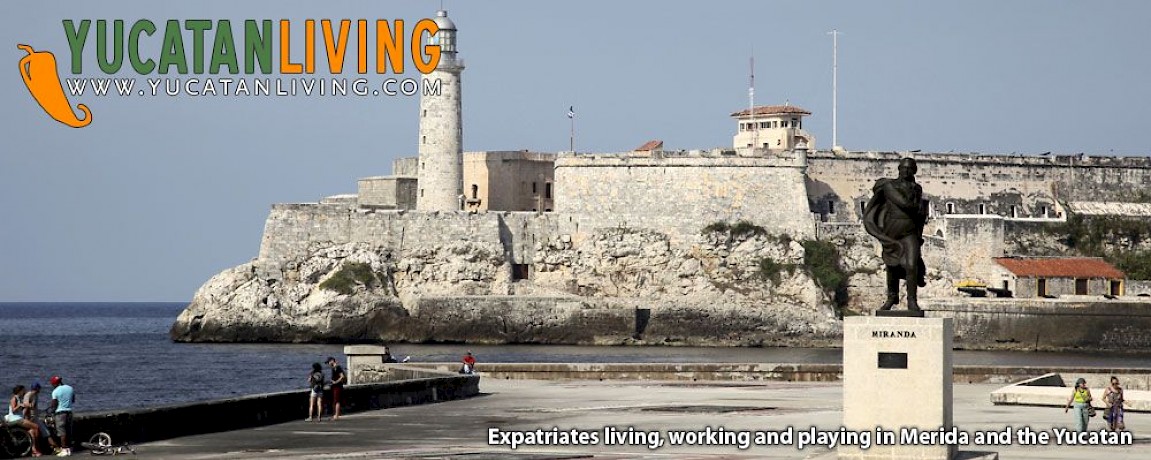

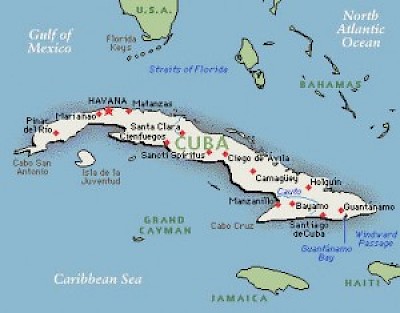
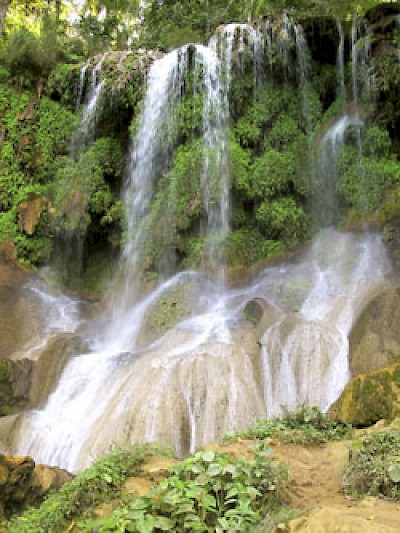


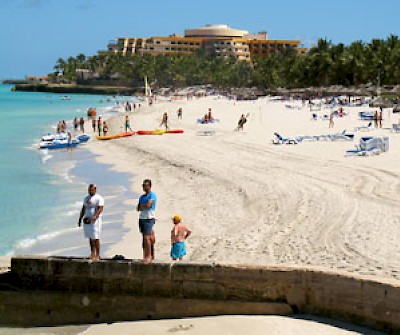
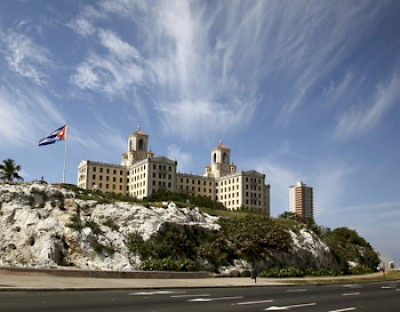
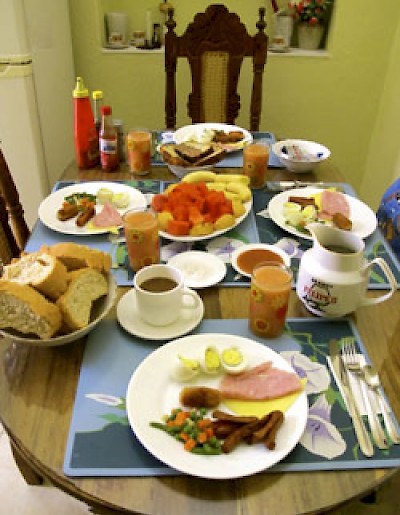
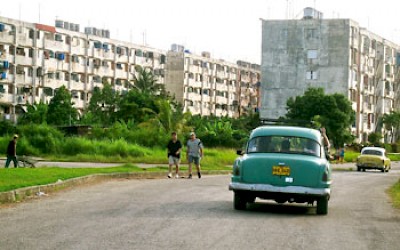
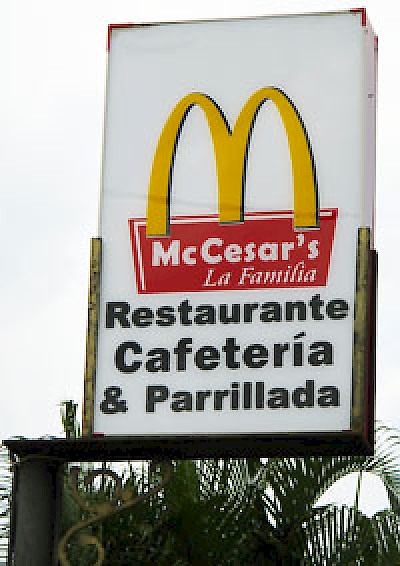
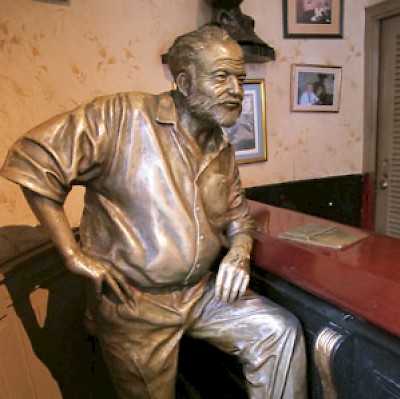
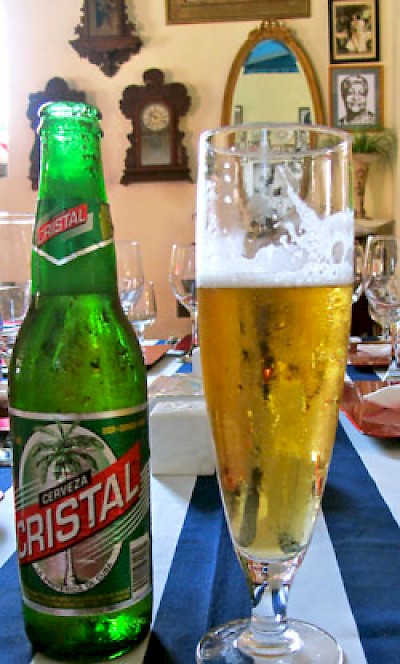

Comments
Marty Rosenzweig 11 years ago
Your "People to People" link doesn't appear to list Cuba as a country they travel to?
Reply
John Venator 11 years ago
Truly wonderful article. I feel like I have been there myself after reading about the trip. I can hardly wait for the next installments!
Reply
peter hobday 11 years ago
Thanks Byron - a great article full of good facts!
The only thing I would draw attention to is that a visa to Cuba can take a while to organise and arrive, so check that out with the travel company early on. Look forward to the next article! Thanks!
Reply
Jack W. 11 years ago
Great travelog on Cuba. I've wanted to go there for a long time and look forward to going once I get my Mexican passport.
Thanks for sharing your trip with us.
Reply
Arnaldo Marucco 11 years ago
Thank Byron great article. Waiting for next one!
Reply
Janet Adamson 11 years ago
Excellent well written article. Having travelled to Cuba before and after the Russians the article is very accurate and shows the progress in Cuban life. Look forward to part two.
Reply
mari pintkowski 11 years ago
Great article. I want to go back! Ten years ago it was hard to get around the island. Can't wait to read part 2!
Reply
(0 to 7 comments)